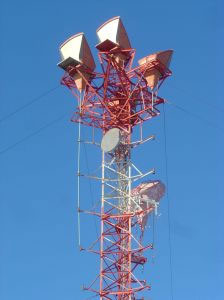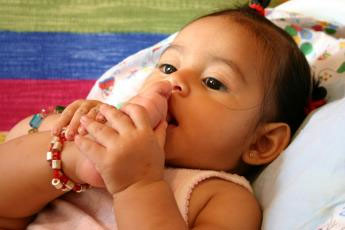Is Wlan Radiation Harmful When Using Laptops
 Another article I found after a research on wlan radiation from our laptops. I am planning to buy one and I am really curious about the real wlan radiation. Here is the story from a doctor, who believed that his arrhythmia was connected with wlan radiation. In fact most of his family members were somehow affected after he installed the wlan network in his house. Interesting article I must say and I would definitely think before using wlan with my future laptop. Why risk your health if it is not necessary at all. I must say the source of this story is not proven to be of high importance, but still it can make you think. Wlan emits microwaves all over the house and even beyond and we know that microwaves are very dangerous. And still people are rather using wlan that good old lan cables. Even many schools are considering installing wlan into the classrooms because there is no cable and wiring costs. Read more about wlan radiation in the following article…
Another article I found after a research on wlan radiation from our laptops. I am planning to buy one and I am really curious about the real wlan radiation. Here is the story from a doctor, who believed that his arrhythmia was connected with wlan radiation. In fact most of his family members were somehow affected after he installed the wlan network in his house. Interesting article I must say and I would definitely think before using wlan with my future laptop. Why risk your health if it is not necessary at all. I must say the source of this story is not proven to be of high importance, but still it can make you think. Wlan emits microwaves all over the house and even beyond and we know that microwaves are very dangerous. And still people are rather using wlan that good old lan cables. Even many schools are considering installing wlan into the classrooms because there is no cable and wiring costs. Read more about wlan radiation in the following article…
4th November 2003
Wireless Local Area Networks (WLANs) and Bluetooth
We are very concerned about the use of WLANs in internet cafés, hotels, schools, colleges and other public and private places. These emit a constant stream of pulsing low-level microwaves that we believe will cause some people to experience adverse health effects.
Each computer that logs onto the WLAN network also emits pulsing microwaves so that in a classroom or an internet café the background electropollution level rises considerably. Here is a personal story from a UK medical doctor (we have full contact details): “Last July, out of the blue I developed a disruption to my heart rhythm. As a qualified Doctor I considered possible causes, such as caffeine intake, tiredness, high blood pressure, or the onset of menopausal symptoms. Being slight of frame, with normal to low blood pressure and excellent general health, I reasoned the ectopic beats and variable pulse rate would probably go away with a reduction in my tea and coffee, and a little rest. Over the next 6 weeks, the arrhythmia continued to the point where I was aware of it for the majority of the day. I also experienced disturbance to my sleep, waking in the early hours and then being unable to fall asleep again. From the tightness of my upper chest I knew I was not getting enough oxygen. I was very reluctant to consult my GP, aware of the investigations it would initiate, and also of the many drugs in the armoury for treating arrhythmias with their multitude of side effects. There was no precipitating factor I could identify that would afflict a fit 49 year old, with no pre-existing heart or respiratory problems, in this way. On the verge of making an appointment with my GP, I linked the onset of my symptoms to our acquisition of a laptop with a wireless modem (NET GEAR and is a Wireless ADSL Modem Gateway DG824M) situated in the hallway. This “base station” had been transmitting microwaves 24 hours/day at a frequency of 2.4GHz, extending to a radius of 150 feet. These (and similar) are being placed in the foyers of airports, and hotels, in GP’s surgeries, coffee shops and student halls of residence, so individuals can use their laptops with the minimum of fuss. We disconnected the wireless base station, replacing it with a fixed line. Within 3 weeks I was totally free of any abnormality as detected by pulse or symptoms, my sleep settled back to normal, as did my energy.
On consideration, during the summer others in my family of 5 have been abnormally fatigued with disturbed sleep patterns. My 18 year old daughter had an episode of extreme dizziness lasting a whole day after close contact with the transmitter. My 22 year old son similarly experienced vomiting and vertigo, disabling him for a day after spending 2 hours within feet of the apparatus.
If this is how it affects a healthy family of adults over a short period of time, what will be the consequences on a cross-section of the general population, let alone those with heart problems or pacemakers, the pregnant and the young? What is the real price of convenience?
F.F. MB ChB”
According to various European groups (e.g. FEB) for the electrically sensitive, some people are disturbed by pulsing microwave fields as low as 0.01 volts per metre. The recent Dutch Government funded TNO study into base station signals (see www.powerwatch.org.uk website for details) found that there were statistically significant cognitive and adverse well-being changes in ‘ordinary’ people subjected to just 20 minutes exposure of 1 volt/metre of 3G base station signal. A typical minimum ‘safety factor’ would be 10, so that means a precautionary maximum of 0.1 volts per metre or less. WLAN nodes typically emit either up to 100 mW or 500 mW. To keep to a maximum of 0.1 V/m would mean keeping at least (respectively) 17 or 40 metres away from the node. This is usually impractical.
WLAN cards in computers (including laptops with built in WLAN capability) typically emit 1 to 2.5 mW. This will exceed the suggested 0.1 V/m precautionary maximum of pulsing microwaves for over one metre around the computer and produce up to 1 V/m at 40 cm from the keyboard and screen where the person (e.g. school pupil) will be working. Any classroom with 10, or so, WLAN computers will be awash with a sea of pulsing microwave pollution. Sensitive people will be adversely affected.
The Swedish FEB website ( www.feb.se ) gives some details of the problems of electrosensitivity (ES). From the few formal scientific investigations that have been done into this it appears that people who are sensitive to other things (e.g. chemicals, pollen, noise, etc) are also more likely to sensitive to electromagnetic fields. They suggest that between 3% and 10% of people exhibit symptoms of electrosensitivity (undiagnosed as to their cause in most cases).
Typical problems include headaches, loss of concentration, attention deficit, hyperactivity, poorly functioning immune system, unusual levels of fatigue and general lack of well-being as defined by the World Health Organisation.
We do not have a problem with traditional wired LAN networks (e.g. Ethernet, etc), and that is what we strongly recommend is installed in schools and colleges. However, increasingly, organisations are installing WLANs as they see them as cheaper (because fixed wiring is not necessary) and more versatile as one fixed node can often cover several classrooms and pupils can carry their WLAN enabled laptops from class to class. If schools plan their internet and intranet (the schools local network) access sensibly it should not be necessary to have large numbers of networked computers in most classrooms.
It is often said that most teenagers have and use their own mobile phones. This is true, but it is also against current UK Government Department of Health advice for under 16 year olds. We also believe that mobile phone use is affecting the behaviour and attention span of young people, though there have not been formal scientific studies into this. Two scientific studies have shown cognitive changes in people using mobile phones – it has acted as a brain activity stimulant in the short term (one 20 minute exposure), but concerns were expressed than ongoing stimulation could well produce adverse effects in the longer term. However most youngsters mainly use their handsets for sending and receiving SMS text messages and so have only occasional exposure. Sitting for several periods a day in a room of WLAN enabled computers is a much more serious chronic exposure.
If schools insist on installing wireless networks, then we say that is essential that teaching and care staff are formally warned to look out for adverse changes among pupils and a formal reporting system implemented so that the school keeps records of any perceived adverse effects.
We also strongly recommend that there should be extra classrooms set aside where pupils who are sensitive to pulsing microwave electropollution may work free from the polluting WLAN connected laptops and wall or ceiling mounted WLAN nodes. It is NOT adequate just to place them in one corner of the classroom – they will still be irradiated to an unacceptable level.
The following table showing increasing levels of concern (similar to guidance for WLAN frequencies of 2.4 and 5 GHz). The “equivalent speed” is for easy comparison with the Salzburg 1998 Guidance.
1800 MHz (1.8 GHz) Public Exposure Guidelines Equivalent
c.f. speed
(abbreviated table) uW/m2 Volts/m m.p.h.
ICNIRP (1998), WHO 9 000 000 58 2847
Italy, Russia, PRChina, Switzerland, Lichtenstein 100 000 6 300
Belgium (Wallonia), Luxembourg 24 000 3 147
Italy (single frequency), Salzburg 1998 (sum GSM) 1 000 0.6 30
EU-Parl, GD Wissenschaft, STOA GSM (2001) 100 0.2 9
Salzburg GSM/3G etc outside houses (2002) 10 0.06 3
Salzburg GSM/3G etc inside houses (2002) 1 0.02 1
Buergerforum BRD proposal, waking areas (1999) 1 0.02 1
Written by Alasdair Philips, Director of Powerwatch.





